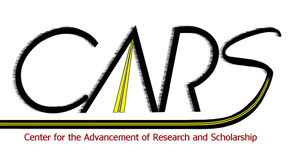Research Talks in Physical Science
Location
Hart 116
Start Time
9-5-2012 2:45 PM
End Time
9-5-2012 3:45 PM
Description
Two research talks in physical science will be given at a Scientific American level.
2:45-3:15 PM – Crystal Growth Mechanisms in the Mineral Dolomite
Dr. Stephen Kaczmarek
Dolomite is a common carbonate mineral in limestone rocks. Experimentally grown and naturally occurring dolomite crystals are analyzed with scanning electron and atomic force microscopy. Nanometer-scale growth and dissolution features on dolomite surfaces are used to infer the physical mechanisms of crystal growth.
3:15-3:45 PM – Progress in Computational Gravitational Lensing
Dr. Thomas Kling
Gravitational lensing refers to the distortion of the optical properties of the light traveling to us from distant stars or galaxies due to the gravity of massive objects along the light’s path. Analysis of lensing data can lead to understanding the mass density profiles of those massive objects – identifying planets around stars, black holes, or the mass distribution of clusters. The development of new computational tools to analyze data will be discussed.
Research Talks in Physical Science
Hart 116
Two research talks in physical science will be given at a Scientific American level.
2:45-3:15 PM – Crystal Growth Mechanisms in the Mineral Dolomite
Dr. Stephen Kaczmarek
Dolomite is a common carbonate mineral in limestone rocks. Experimentally grown and naturally occurring dolomite crystals are analyzed with scanning electron and atomic force microscopy. Nanometer-scale growth and dissolution features on dolomite surfaces are used to infer the physical mechanisms of crystal growth.
3:15-3:45 PM – Progress in Computational Gravitational Lensing
Dr. Thomas Kling
Gravitational lensing refers to the distortion of the optical properties of the light traveling to us from distant stars or galaxies due to the gravity of massive objects along the light’s path. Analysis of lensing data can lead to understanding the mass density profiles of those massive objects – identifying planets around stars, black holes, or the mass distribution of clusters. The development of new computational tools to analyze data will be discussed.

Comments
Moderator: Mahmoud El-Hashash